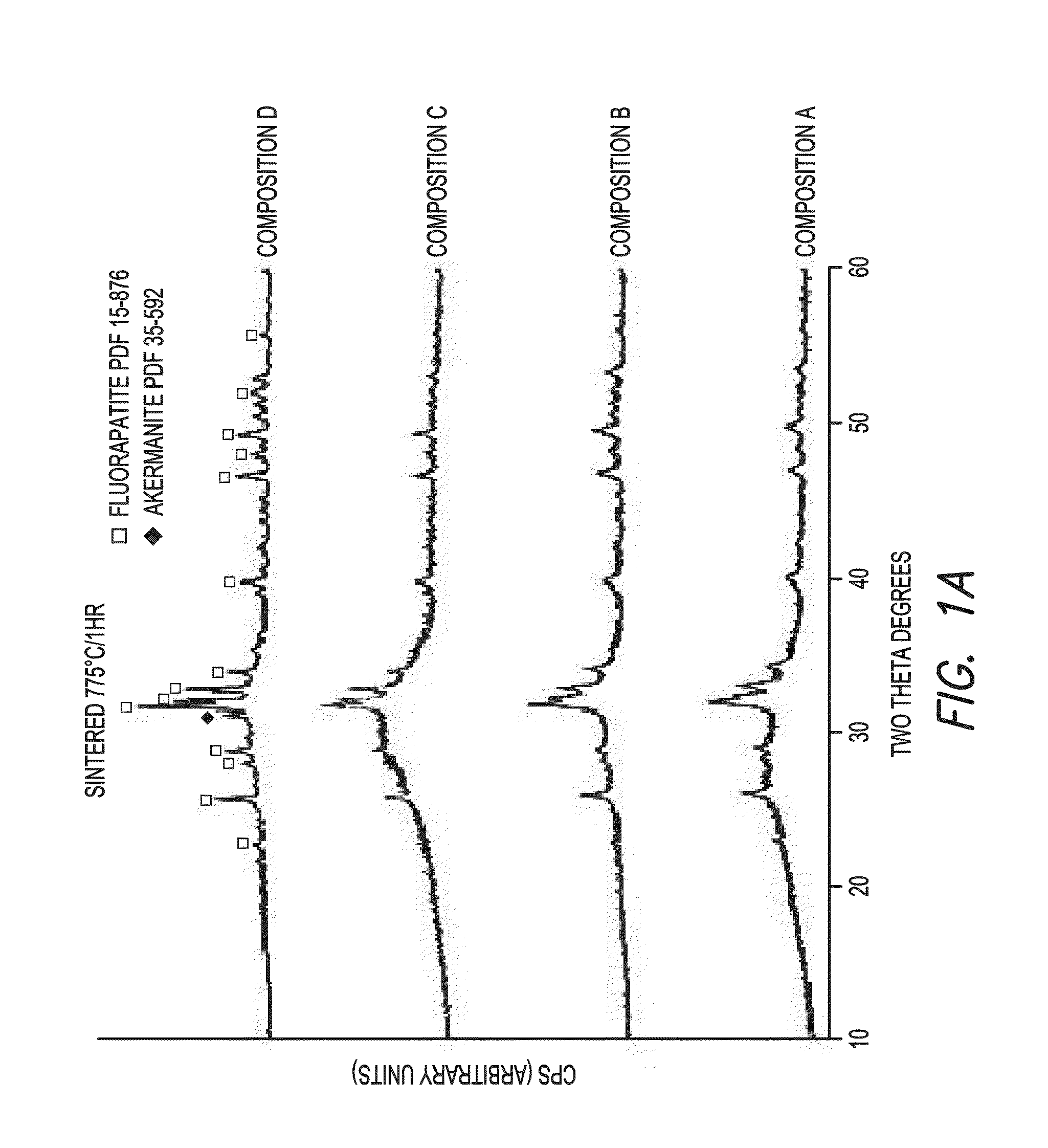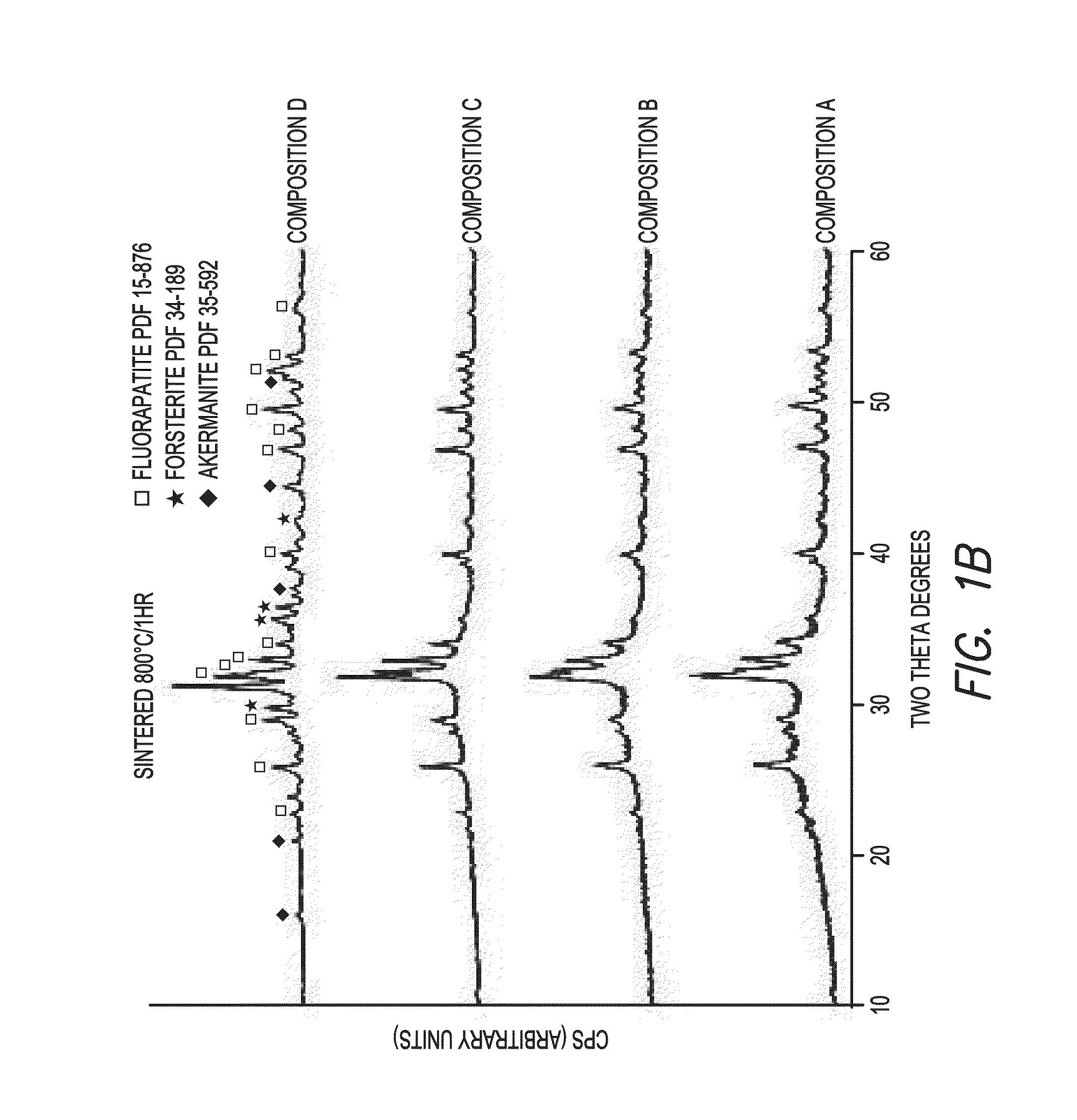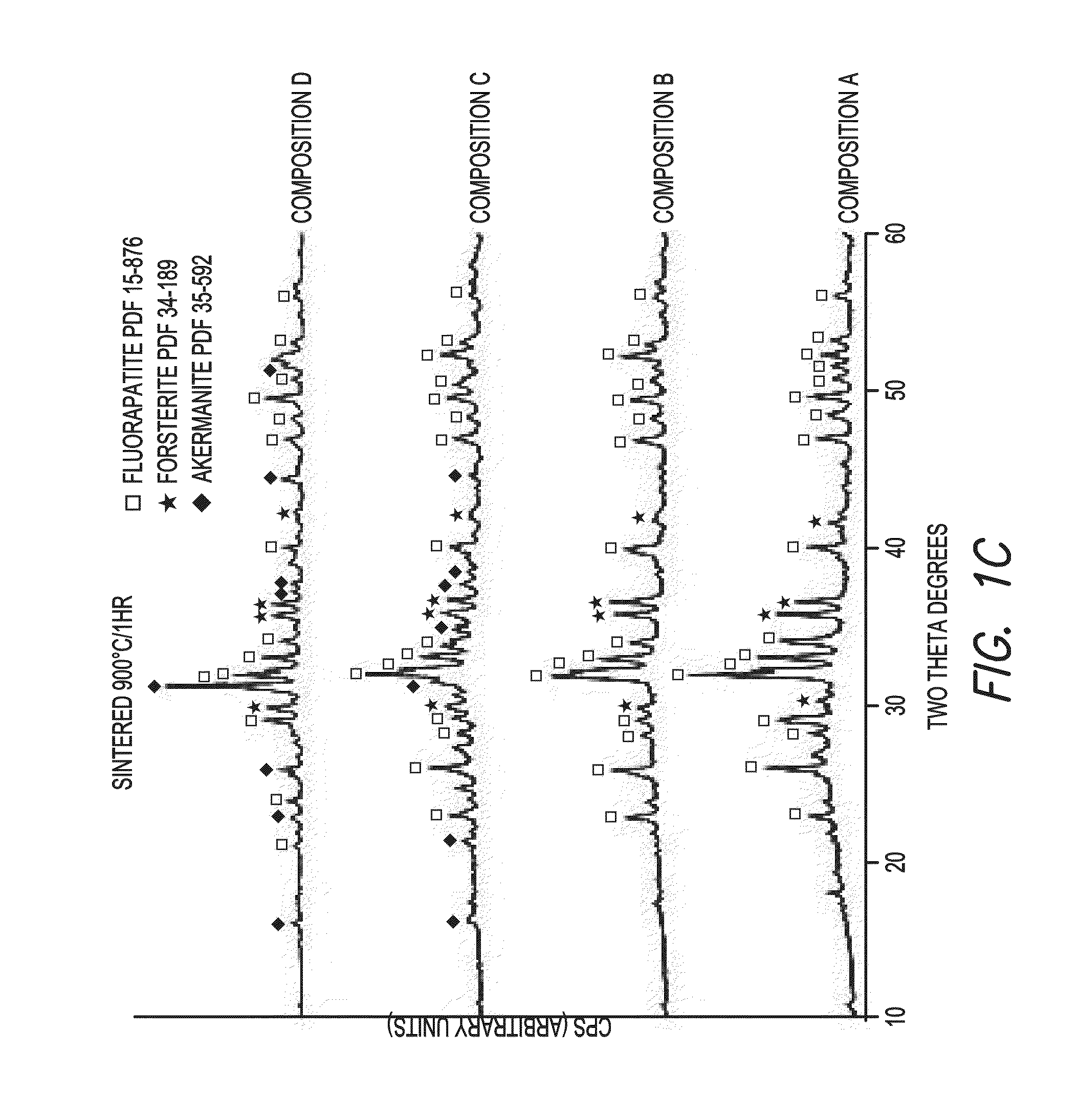Fluorapatite glass-ceramics
a technology of glass-ceramics and fluorapatite, which is applied in the field of fluorapatite glass-ceramics, can solve the problems of loss of hydroxyls or fluorine, high porosity and incomplete sintering, and difficulty in sintering hydroxyapatite and fluorapatite ceramics
- Summary
- Abstract
- Description
- Claims
- Application Information
AI Technical Summary
Benefits of technology
Problems solved by technology
Method used
Image
Examples
example 1
(A) Materials and Methods
[0032]Specimen Preparation
[0033]Four glass compositions with increasing calcium to aluminum mole ratios were prepared by mixing reagent grade oxides and CaF2 (Table 1). Glass compositions with Ca / Al mole ratios of 1(A), 2(B), 4(C) and 19(D) were prepared.
TABLE 1Chemical composition of the glasses prepared (mol. %).CompositionABCDSiO233.933.132.331.5MgO22.922.321.821.2Nb2O50.30.20.20.2CaO8.613.919.023.9Na2O2.52.42.42.3K2O4.14.03.93.8Al2O310.47.13.90.9CaF212.011.811.511.2P2O55.45.25.15.0
Fluoride was introduced as calcium fluoride and was added in excess, as 50% losses by volatilization were anticipated. The compositions A-D were melted at 1525° C. for 3 h in platinum crucibles. After quenching in deionized water, the resulting glass frits were powdered and melted again at 1525° C. for 3 h.
[0034]The molten glasses were cast to form cylindrical rods (10 mm in diameter; 60 mm in length). The rods were furnace-cooled from 685° C. to room temperature and sectioned ...
example 2
(A) Materials and Methods
[0064]Four fluorapatite glass compositions in the SiO2—Al2O3—P2O5—MgO—Na2O—K2O—CaO—CaF2 system, with increasing amounts of strontium oxide (D:0, E:12, F:18 and G:24 mol. %) in replacement for calcium oxide (D: 23.9 (Table 1), E:12, F:18, G:0 (mol. %) (Table 5), were prepared by twice melting mixtures D-F at 1525° C. for 3 h (Table 5).
TABLE 5Chemical Composition of Glasses (mol-%)EFGSiO231.531.531.5MgO21.221.221.2Nb2O50.20.20.2CaO11.96.00.0SrO11.917.923.9Na2O2.32.32.3K2O3.83.83.8Al2O30.90.90.9CaF211.211.211.2P2O55.05.05.0100100100
After the second melt, glasses were cast into cylindrical ingots. Differential thermal analyses were performed on powdered glasses to determine glass transition and crystallization temperature.
[0065]Disc-shaped specimens (1.2 mm thick, 10 mm in diameter) were sectioned from the ingots. Specimens were heat treated at various temperatures ranging from 775 to 900° C. for 1 h, and analyzed by x-ray powder diffraction (Rigaku SmartLab). T...
PUM
| Property | Measurement | Unit |
|---|---|---|
| mole ratio | aaaaa | aaaaa |
| temperatures | aaaaa | aaaaa |
| mole ratio | aaaaa | aaaaa |
Abstract
Description
Claims
Application Information
 Login to View More
Login to View More - R&D
- Intellectual Property
- Life Sciences
- Materials
- Tech Scout
- Unparalleled Data Quality
- Higher Quality Content
- 60% Fewer Hallucinations
Browse by: Latest US Patents, China's latest patents, Technical Efficacy Thesaurus, Application Domain, Technology Topic, Popular Technical Reports.
© 2025 PatSnap. All rights reserved.Legal|Privacy policy|Modern Slavery Act Transparency Statement|Sitemap|About US| Contact US: help@patsnap.com



